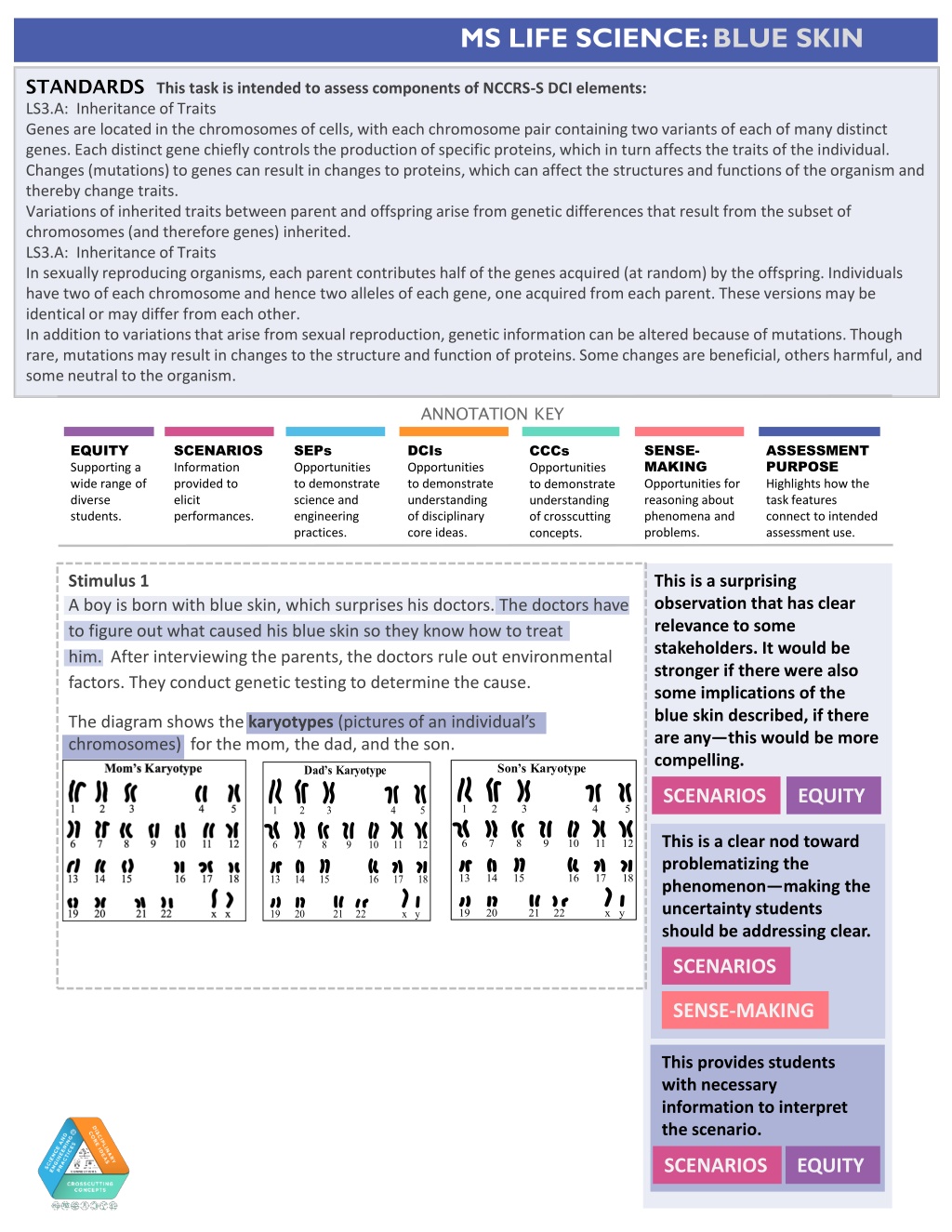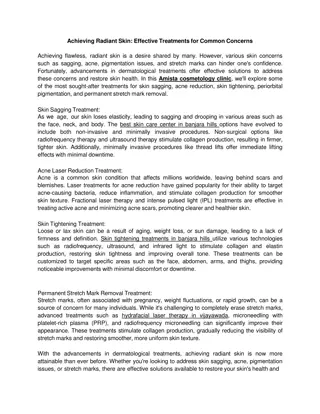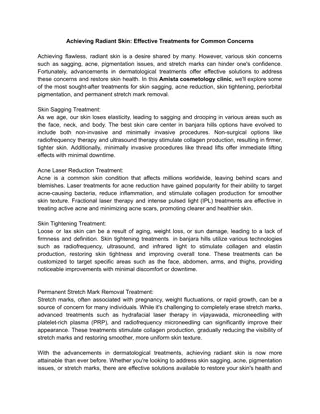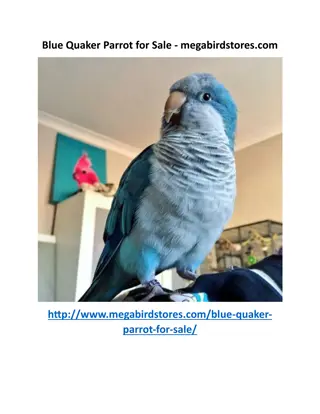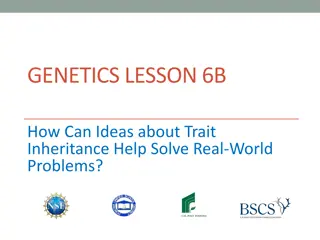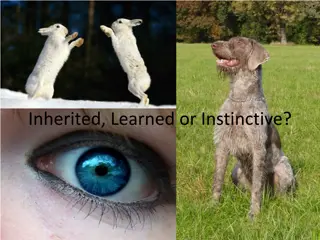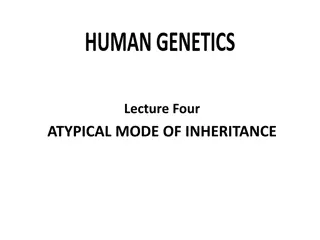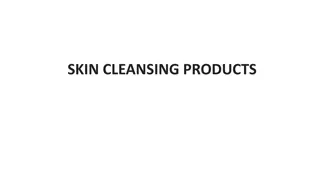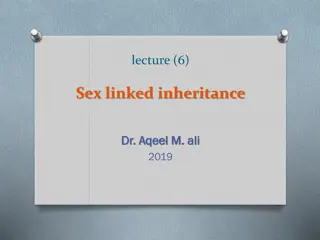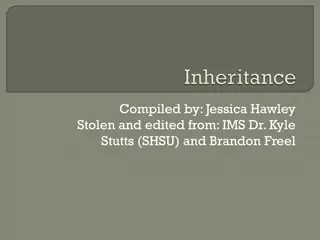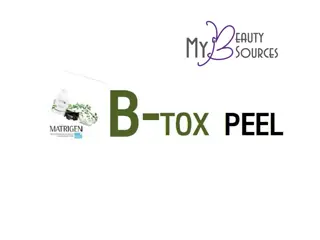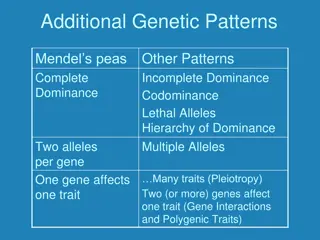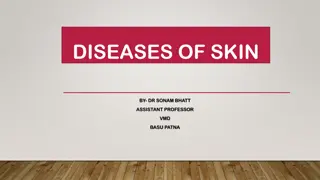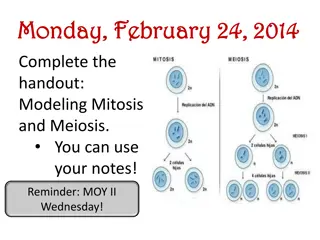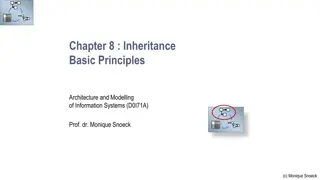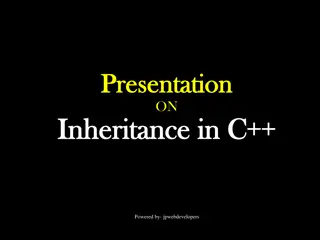Understanding Inheritance of Traits Through Blue Skin Case Study
Assessing genetic inheritance and mutations using a case study of a boy with blue skin. The scenario highlights how genes control traits, the random assortment of chromosomes in offspring, and the impact of mutations on protein function. Students analyze karyotypes to infer genetic differences between parents and offspring, applying knowledge of genetic inheritance and mutation effects.
Download Presentation

Please find below an Image/Link to download the presentation.
The content on the website is provided AS IS for your information and personal use only. It may not be sold, licensed, or shared on other websites without obtaining consent from the author. Download presentation by click this link. If you encounter any issues during the download, it is possible that the publisher has removed the file from their server.
E N D
Presentation Transcript
MS LIFE SCIENCE: BLUE SKIN STANDARDS This task is intended to assess components of NCCRS-S DCI elements: LS3.A: Inheritance of Traits Genes are located in the chromosomes of cells, with each chromosome pair containing two variants of each of many distinct genes. Each distinct gene chiefly controls the production of specific proteins, which in turn affects the traits of the individual. Changes (mutations) to genes can result in changes to proteins, which can affect the structures and functions of the organism and thereby change traits. Variations of inherited traits between parent and offspring arise from genetic differences that result from the subset of chromosomes (and therefore genes) inherited. LS3.A: Inheritance of Traits In sexually reproducing organisms, each parent contributes half of the genes acquired (at random) by the offspring. Individuals have two of each chromosome and hence two alleles of each gene, one acquired from each parent. These versions may be identical or may differ from each other. In addition to variations that arise from sexual reproduction, genetic information can be altered because of mutations. Though rare, mutations may result in changes to the structure and function of proteins. Some changes are beneficial, others harmful, and some neutral to the organism. ANNOTATION KEY EQUITY Supporting a wide range of diverse students. SCENARIOS Information provided to elicit performances. SEPs Opportunities to demonstrate science and engineering practices. DCIs Opportunities to demonstrate understanding of disciplinary core ideas. SENSE- MAKING Opportunities for reasoning about phenomena and problems. ASSESSMENT PURPOSE Highlights how the task features connect to intended assessment use. CCCs Opportunities to demonstrate understanding of crosscutting concepts. Stimulus 1 A boy is born with blue skin, which surprises his doctors. The doctors have to figure out what caused his blue skin so they know how to treat him. After interviewing the parents, the doctors rule out environmental factors. They conduct genetic testing to determine the cause. This is a surprising observation that has clear relevance to some stakeholders. It would be stronger if there were also some implications of the blue skin described, if there are any this would be more compelling. The diagram shows the karyotypes(pictures of an individual s chromosomes) for the mom, the dad, and the son. SCENARIOS EQUITY This is a clear nod toward problematizing the phenomenon making the uncertainty students should be addressing clear. SCENARIOS SENSE-MAKING This provides students with necessary information to interpret the scenario. SCENARIOS EQUITY
MS LIFE SCIENCE: BLUE SKIN Prompt 1 Although this question refers to the scenario, the correct answer can be selected based on (possibly rote) restated knowledge of part of MS.LS3.B alone that in sexual reproduction, offspring get one chromosome from each parent. Which statement explains why the pattern of chromosomes occurs in pairs? A) B) C) D) All of the son s chromosomes came from his dad. All of the son s chromosomes came from his mom. Each pair of chromosomes came from one parent. One chromosome in each pair came from his mom, and one came from his dad. DCIs Key D Successfully answering the question requires that students can 1) make the correct claim about the chromosomes being similar (not different), 2) identify that mutations are a change to genetic information, and 3) apply an understanding that variations of inherited traits between parent and offspring arise from genetic differences that result from the subset of chromosomes. Prompt 2 What does the pattern of chromosomes among the mom, the dad, and the son allow you to conclude? A) The chromosomes are similar, so there is a mutation of the whole chromosome. B) The chromosomes are different, so there is a mutation of the whole chromosome. C) The chromosomes are similar, so there is not a mutation of the whole chromosome. D) The chromosomes are different, so there is not a mutation of the whole chromosome. Key C DCIs Students need to be able to use logical reasoning and a definitional understanding of mutations to answer this question. SENSE-MAKING Stimuli 2 Doctors examine the karyotypes carefully. The diagram shows a detailed analysis of chromosome 20, 21, and 22 for the mom, the dad, and the son. Only the son has the blue-skin condition. The scenario information is presented to students as they need it, providing a scaffold to support student thinking throughout the task. The scenario relies on limited text and instead presents patterns visually in appropriate ways. SCENARIOS EQUITY SENSE-MAKING
MS LIFE SCIENCE: BLUE SKIN Successfully answering this question requires pattern recognition (looking for the difference between the offspring and each parent) and using this to make a claim. This: does not assess a DCI; assesses a simple understanding of the 3-5 SEP#4 element analyze and interpret data to make sense of phenomena using logical reasoning . This connects to SEP #4 rather than 6 or 7 because students are interpreting observations with logical reasoning to serve as evidence, rather than constructing an explanation with evidence and scientific reasoning. assesses part of the 3-5 patterns element similarities and differences in patterns can be used to sort, classify for natural phenomena . Prompt 3 This question has two parts. Answer Part A, and then answer Part B. Part A Based on the patterns observed in the karyotypes, make a claim about the location of the blue-skin mutation. A) It is in the top half of chromosome 20. B) It is in the pink region of chromosome 20. C) It is in the blue region of chromosome 22. D) It is in the green region of chromosome 22. Part B Select all the statements that support the claim in Part A. A) The pink region in all three people is the same. B) The blue region in all three people is the same. C) The son has a green region on each chromosome. D) The mom has a green region on only one chromosome. E) The chromosomes of all three people are the same length. F) Each person has a green region on at least one of their chromosomes. Key D DCIs SEPs CCCs Successfully responding to this question requires that students select which patterns provide evidence for the correct claim. This connect with parts of the 3- 5 patterns elements similarities and differences in patterns can be used to sort, classify for natural phenomena and patterns can be used to support an explanation . Part B Select all the statements that support the claim in Part A. A) The pink region in all three people is the same. B) The blue region in all three people is the same. C) The son has a green region on each chromosome. D) The mom has a green region on only one chromosome. E) The chromosomes of all three people are the same length. F) Each person has a green region on at least one of their chromosomes. Key C, D CCCs
MS LIFE SCIENCE: BLUE SKIN Responding to this prompt requires that students correctly interpret the karyotype. This prompt requires students to use the same 3-5 parts of SEPs and CCCs as prompt 3, and does not assess a DCI. This provides students with a different way to show their understanding of prompt 3 but does not provide evidence for additional understanding; this prompt also scaffolds student thinking for prompt 5. Prompt 4 Use the karyotypes to describe the patterns of alleles for the mom, the dad, and the son. Enter the genotype for each individual in the box. Alleles N allele for non-blue skin n allele for blue skin Mom ____________ Dad ____________ Son __________ Key (top to bottom) Nn, Nn, nn DCIs SEPs CCCs EQUITY Responding to this question requires that students 1) correctly read the provided diagram (pedigree chart), and 2) apply their understanding that each offspring gets one allele from each parent, and 3) that only individuals with nn have blue skin. The question best assesses the part of the DCI MS.LS3.B In sexually reproducing organisms, each parent contributes half of the genes acquired (at random) by the offspring. Individuals have two of each chromosome and hence two alleles of each gene, one acquired from each parent. Prompt 5 The pedigree chart represents the family of the blue-skinned boy. The squares represent males, and the circles represent females. The parents did not have blue skin. Which statement BEST describes the genetics of the son s grandparents? A) B) C) D) Both grandparents on one side must have blue skin. One grandparent on each side must have the blue skin allele. Both grandparents on one side must have the blue skin allele. One of the grandparents on each side must have blue skin. Key B DCIs
MS LIFE SCIENCE: BLUE SKIN This scenario provides some context for the protein hemoglobin, helping students understand how the mutation works. This would be improved if an image/diagram of hemoglobin was presented between methemoblobinemia and hemoglobin, there are complex, unfamiliar words presented that may confuse some students. Stimuli 3 Genetic testing reveals the cause of the blue skin is a mutation in one of the genes on chromosome 22. The recessive condition is called methemoglobinemia. In this condition, the hemoglobin proteins are changed. The changed hemoglobin in the blood binds too tightly to oxygen and cannot release oxygen to the cells. The lack of oxygen makes the skin appear blue. SCENARIOS EQUITY By providing this information, students are no longer figuring out the phenomenon; this makes it more likely that students will be sharing DCI knowledge that using that DCI understanding to make sense of the phenomenon. DCIs SENSE-MAKING Prompt 6 Which model best explains the relationship between the blue-skin trait, the gene, and the protein? Successfully responding to this question requires that students know genes lead to proteins which determine traits. This requires almost direct, simple recitation of part of MS.LS.3A gene controls the production of proteins, which in turn affects the traits of the individual. It should be noted that successfully responding to this question doesn t actually require students understand that mutations are changes in genes, or that genes control specific proteins which lead to specific traits. A) B) C) D) Key - C It is confusing why the language changes in different boxes why change in skin color is used sometimes when blue skin is used in other instances. DCIs EQUITY
MS LIFE SCIENCE: BLUE SKIN In word, this is a confusing question are students given the full paragraph and have to select the right sentences? Regardless, many parts of the paragraph could be used as part of the evidence to support the claim, not just the statements highlighted in red. Prompt 7 This question has two parts. Answer part A, and then answer part B. The son s parents want to know how this mutation is going to affect their son. Read the paragraph and identify the evidence to support a claim that the blue-skin mutation is harmful, beneficial, or neutral. EQUITY Because this statement is so direct, there is little interpretation required. While this might require some limited portion of SEP #8 Obtaining, Evaluating, and Communicating Information, there is little evaluation. This connects most closely to the K-2 SEP #8 element read texts to obtain scientific information to determine evidence about the natural world. Part A [Test results showed the son has methemoglobinemia, which is caused by an abnormal form of the hemoglobin protein.] Hemoglobin carries oxygen in the blood to the tissues. [This condition was inherited through a recessive gene that was passed on by the parents.] [The hemoglobin protein binds too tightly to oxygen and does not release oxygen to the cells.] This lack of oxygen makes the skin appear blue. The entire body is not usually blue. The condition is usually focused on only one small area of the body. [A few cases have large parts of the body covered, but these are rare.] [The condition does not affect only skin color. A person with the condition might also get tired easily, feel dizzy, or faint. Rarely, the lack of oxygen may cause seizures or other serious medical issues.] SEPs Successfully responding to this part of the question requires that students interpret the provided information. This assesses reading comprehension and that students understand what harmful , beneficial and mutual mean this does not meaningfully assess the three dimensions. Part B Based on the statements, the mutation could be [harmful], [beneficial], [neutral].
